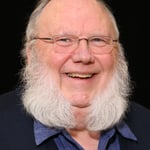The Tomb Is Empty
This reflection was originally published on April 11th, 2020.
I’d like to relate a story told by Harry Pritchett:
Philip was a pleasant child — happy, it seemed — but increasingly aware of the difference between himself and other children. He had been born with Down Syndrome.
Philip attended Sunday school. The other eight-year-olds in his class learned, laughed, and played together. But because of his differences, Philip wasn’t readily accepted by his classmates. Philip didn’t want to be different. He just was.
On the Sunday after Easter, their teacher had collected 10 egg-shaped containers. Each child received one. The children were assigned to
go out in the church yard and find a symbol for new life, put it in the egg, and bring it to the classroom. They would then mix up all the eggs, open them up, and share what they had found. The children ran around, gathered their symbols, and returned. They put all the big eggs on a table. Then the teacher began to open them. He opened one and there was a flower. He opened another one and a butterfly fluttered out. When he opened the last one, there was nothing in it. The children said, “That’s not fair. That’s stupid! Somebody didn’t do it right.”
Philip started to cry. “It’s mine,” Philip said. “It’s mine.”
The children said, “You don’t ever do things right, Philip. There’s nothing there!”
“I did so do it,” Philip said. “I did do it. It’s empty! The tomb is empty!” The teacher and class went into a deep silence.
That day, Philip became a part of that group of eight year olds. They took him in and he entered. He was set free from the tomb of his differentness. He was accepted and loved by the other kids, and that truly meant new life for him.
Contemplating the meaning of Easter, this is a good time to ask ourselves: what personal tombs do we need to be set free from? In John 10:10, Jesus says that he has come to give us “abundant life”, and the same Holy Spirit that raised Jesus from his tomb, 2000 years ago, can work in our lives if we just give Him permission.
